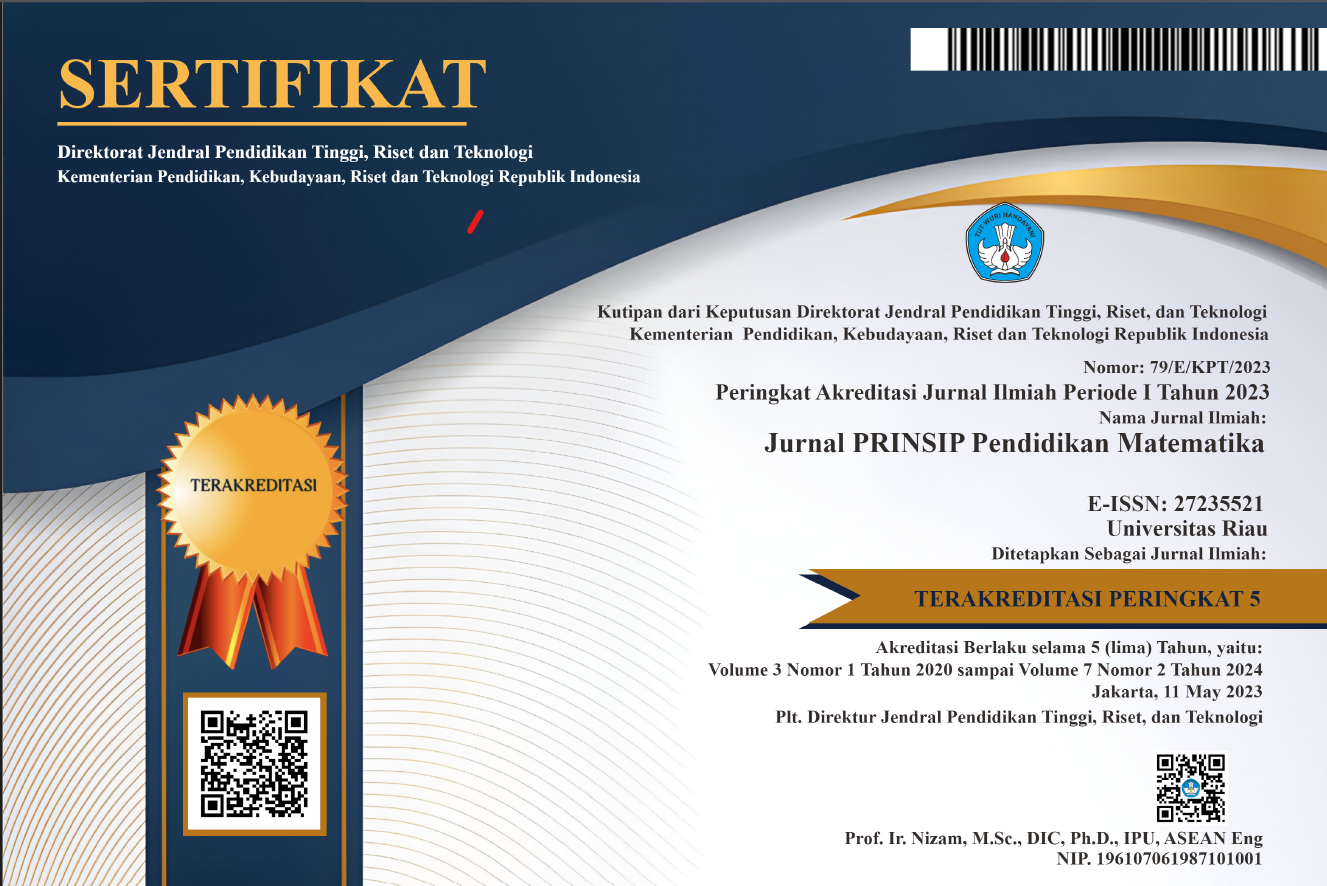DEVELOPMENT OF MATHEMATICS LEARNING DEVICES BASED ON PROBLEM-BASED LEARNING ON THE MATERIAL OF POLYHEDRON FOR CLASS VIII SMP/MTs STUDENTS
Abstract
This research aims to produce mathematics learning tools in the form of syllabus, lesson plans (RPP), and student worksheets (LKPD) based on learning models based on the problem of building flat side spaces for 8th-grade students of junior high school. This research uses a 4-D development model which includes four stages, namely: (1) define (defining); (2) design (planning); (3) develop (development); and (4) disseminate (spread). The research instrument used is the instrument of validity and practicality. The validity instrument is in the form of a validation sheet to assess the feasibility of the syllabus, lesson plans, and LKPD. The practical instrument is in the form of a student response questionnaire to the use of LKPD. The learning tools that have been compiled are then validated by three validators and revised according to suggestions from the validators. The valid learning tools were then tested in small groups with the subject of 6 students in grade 8th junior high school. Based on the data analysis and discussion results, mathematics learning tools in the form of Syllabus, RPP and LKPD based on learning models based on problems in the flat-sided space building material are considered very valid and practical to be used by 8th-grade students of junior high school.
Downloads
References
Akbar, S. (2013). Instrumen perangkat pembelajaran. Remaja Rosdakarya.
Al-Tabany, T. I. B. (2014). Mendesain model pembelajaran inovatif, progresif, dan kontekstual. Kencana Prenadamedia Media Group.
Arikunto, S. (2016). Prosedur penelitian suatu pendekatan praktik. Rineka Cipta.
Prastowo, A. (2015). Panduan kreatif membuat bahan ajar inovatif (VIII). Diva Press.
Shoimin, A. (2014). 68 model pembelajaran inovatif dalam Kurikulum 2013. In Ar-Ruzz Media. Ar-Ruzz Media.
Siregar, H. M. (2019). Analisis kesalahan siswa dalam menyelesaikan soal tes kemampuan berpikir kreatif matematis materi Lingkaran. AKSIOMA: Jurnal Program Studi Pendidikan Matematika, 8(3), 497–507. https://doi.org/10.24127/ajpm.v8i3.2379
Siregar, H. M., & Siregar, S. N. (2021). Profil self regulation mahasiswa pendidikan matematika FKIP Universitas Riau di masa pandemi Covid-19. ANARGYA: Jurnal Ilmiah Pendidikan Matematika, 4(1), 1–10. https://doi.org/10.24176/anargya.v4i1.5601
Solfitri, T., & Siregar, H. M. (2021). Developing integration techniques module to improve mathematical creative thinking ability in Integral Calculus. Jurnal PAJAR (Pendidikan Dan Pengajaran), 5(2), 296–305. https://doi.org/http://dx.doi.org/10.33578/pjr.v5i2.8221
Solfitri, T., Siregar, S. N., & Roza, Y. (2017). Pengembangan perangkat pembelajaran Matematika berbasis Kurikulum 2013 pada materi Bangun Ruang Sisi Datar dan Lingkaran untuk siswa kelas VIII tingkat SMP/MTs. Edu Math Journal Prodi Pendidikan Matematika, 4(1).
Sugiyono. (2015). Metode Penelitian dan Pengembangan Pendekatan Kualitatif, Kuantitatif, dan R&D. In Metode Penelitian dan Pengembangan Pendekatan Kualitatif, Kuantitatif, dan R&D. Alfabeta.
Copyright (c) 2022 Jurnal Prinsip Pendidikan Matematika

This work is licensed under a Creative Commons Attribution-NonCommercial-ShareAlike 4.0 International License.





